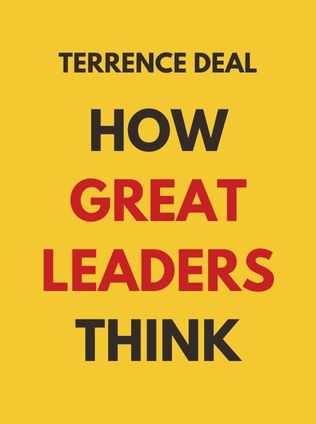
How Great Leaders Think
The Art of Reframing
By Terrence Deal,
Published 07/2014
About the Author
Lee G. Bolman holds the Marion Block Missouri Chair in Leadership at the Bloch School of Management, University of Missouri-Kansas City. He is the co-author of the best-selling book Reframing Organizations. Terrence E. Deal is the founder of the Deal Leadership Institute and has served on the faculties of Stanford, Harvard, Vanderbilt, and the University of Southern California. He is the author or co-author of 27 books, including the best-seller Corporate Cultures, as well as numerous articles on organizations, change, and leadership.
Main Idea
How Great Leaders Think: The Art of Reframing by Lee G. Bolman and Terrence E. Deal explores how successful leaders utilize different frames or perspectives to navigate complex organizational landscapes. The book emphasizes the importance of reframing situations to gain a deeper understanding and to achieve better results. The authors present a four-frame model: structural, human resource, political, and symbolic, each providing a unique lens through which leaders can interpret their environments and make strategic decisions.
Table of Contents
- Leadership in Four Dimensions
- Structural Leadership
- Human Resource Leadership
- Political Leadership
- Symbolic Leadership
- Improving Leadership Practice
About the Book
The book opens with a compelling exploration of why some leaders succeed while others fail, using examples such as Steve Jobs, Howard Schultz, and Alan Mulally. The authors argue that the key to successful leadership lies in the ability to reframe - to look at situations through different lenses and to adapt one's approach accordingly. This reframing allows leaders to capture a sharper image of their surroundings and to understand what actions are necessary to achieve their goals.
Leadership in Four Dimensions
Intelligence, talent, and experience are essential qualities for leadership, but they are not enough. Successful leaders must also possess the ability to reframe situations, to view them from multiple perspectives. Bolman and Deal introduce four major frames:
- Structural Frame: This frame focuses on the architecture of the organization, emphasizing roles, responsibilities, and policies. It is about designing teams and workflows to achieve efficiency and effectiveness.
- Human Resource Frame: This frame emphasizes the importance of people, their needs, and their relationships within the organization. It highlights the value of aligning organizational goals with human needs.
- Political Frame: This frame recognizes that organizations are arenas of competition and conflict among individuals and groups with differing interests. It focuses on power dynamics, conflict resolution, and coalition-building.
- Symbolic Frame: This frame deals with culture, meaning, and rituals within the organization. It underscores the importance of symbols, stories, and ceremonies in shaping organizational life.
Structural Leadership
Effective structural leadership involves organizing teams and resources in a way that maximizes productivity and minimizes confusion. Leaders need to pay attention to the structure of their organizations, ensuring that roles and responsibilities are clearly defined and that there are efficient mechanisms for coordination and control.
Sign up for FREE and get access to 1,400+ books summaries.
You May Also Like
The Subtle Art of Not Giving a F*ck
A Counterintuitive Approach to Living a Good Life
By Mark MansonRich Dad Poor Dad
What the Rich Teach Their Kids About Money - That the Poor and Middle Class Do Not!
By Robert T. KiyosakiHow To Win Friends and Influence People
The All-Time Classic Manual Of People Skills
By Dale CarnegieQuiet: The Power of Introverts
The Power of Introverts in a World That Can't Stop Talking
By Susan Cain



















